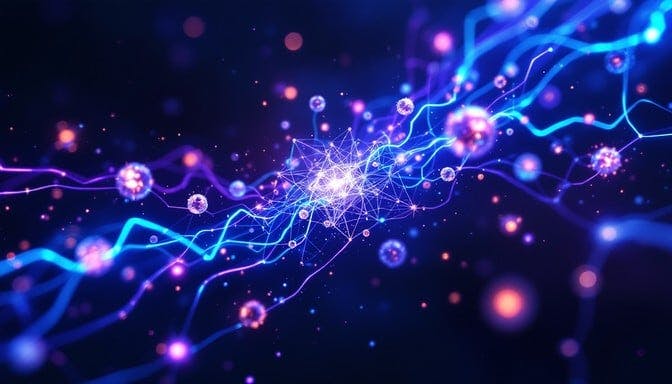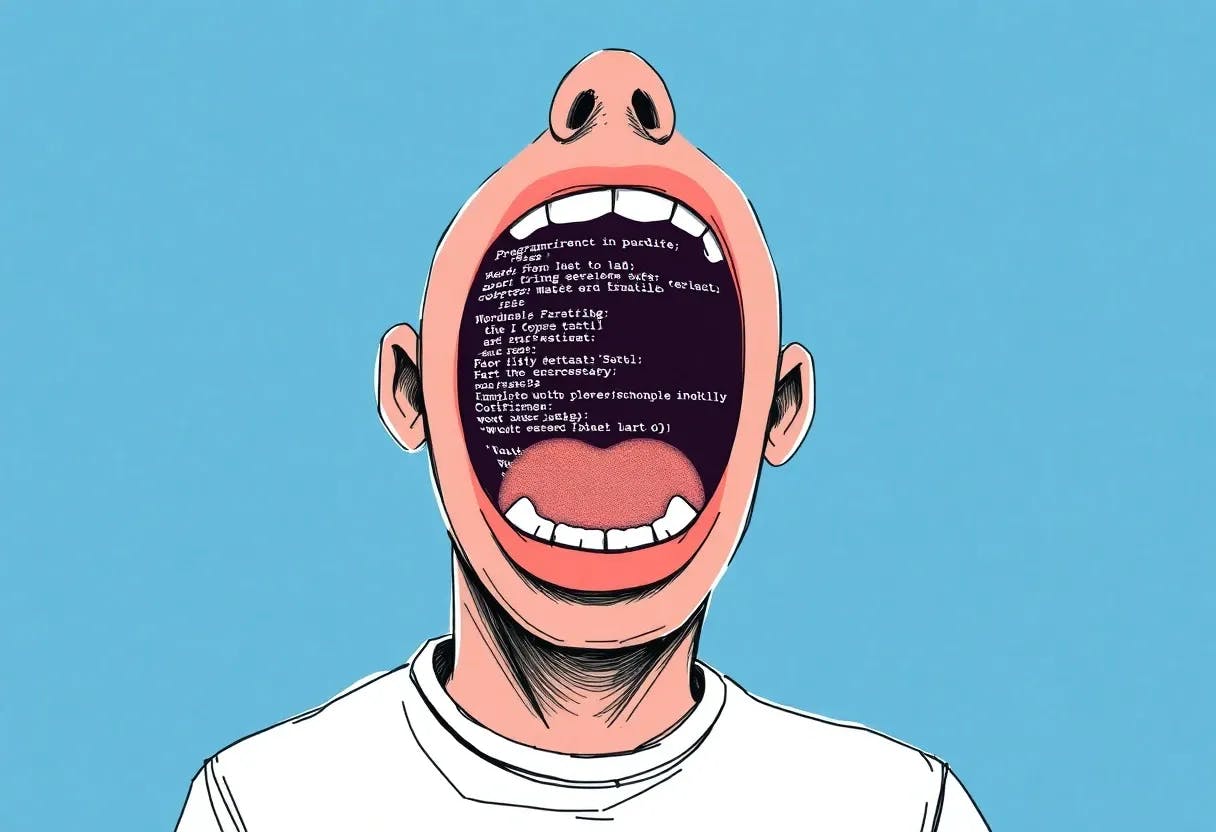In order to make sense of why I’ve gone down this rabbit hole, it’s probably a good idea to start from the beginning, a very good place to start, croons Julie Andrews in my ear.
There are already many existing theories of consciousness all vying for a place in the annals of Wikipedia as being the prevailing hypothesis with which we should base our assumptions, and when I say many, I mean a lot! And they are as radical as they are diverse. What does the word “consciousness” mean? It has multiple definitions, which have been part of the problem in the first place.
“Opinions differ about what exactly needs to be studied or even considered consciousness. In some explanations, it is synonymous with the mind, and at other times, an aspect of it. In the past, it was one’s “inner life”, the world of introspection, of private thought, imagination, and volition. Today, it often includes any kind of cognition, experience, feeling, or perception. It may be awareness, awareness of awareness, metacognition, or self-awareness, either continuously changing or not.” – Wikipedia
The disparate range of research, notions, and speculations raises a curiosity about whether the right questions are being asked.
And there’s the crux of the problem. Depending on your field, the questions posed around the nature of consciousness are isolated and reek of protectionism.
So, why bother with Quantum Stream Theory and add another definition to the pile? It’s simple, there are golden nuggets of wisdom contained in some of these theories that, when worked together, could help solve the problem of definition and then move the field further beyond theory. QST from the very beginning was conceived as an interdisciplinary approach. Let’s get started.
What theories are out there already?
- Materialism
- Non-Reductive Physicalism
- Quantum
- Integrated Information Theory
- Panpsychism
- Monism
- Dualism
- Idealism
- Anomalous and Altered States
- Hard Problem Challenges
Each of these mainline theories also contains a number of “sub-theories” that break them down further in various degrees of nuance. For example, there are some 20 sub-theories that discuss altered states of consciousness and what this means, and don’t even bother to take a look at Materialism…(ok, if you must, there are over 90!)
I’m going to try my best here to summarise the main acts and then include a few of the more interesting support acts, so bear with me on this.
Materialism
Materialism theories maintain that consciousness emerges entirely from physical processes. It’s split into subcategories, each emphasising distinct mechanisms:
- Neurobiological Theories suggest that consciousness arises from specific neural architectures, such as thalamocortical loops or global workspace models. For example, recurrent processing in the brain’s sensory regions may generate integrated perceptual experiences. Critics argue that neural correlates alone fail to address why certain brain activities produce subjective awareness, though.
- Computational and Informational Theories claim that consciousness is viewed as a product of information processing. Integrated Information Theory (IIT) initially fell into this category, proposing that consciousness corresponds to the degree of informational integration in a system. However, this raises questions about whether non-biological systems (e.g., computers) could achieve consciousness purely through computation (me: they can’t, ever).
- Electromagnetic Field Theories suggest that the brain’s electromagnetic fields, rather than individual neurons, generate conscious states. For instance, synchronous oscillations in the gamma range (30–80 Hz) may bind disparate sensory inputs into a unified experience. Critics question how fields alone account for qualitative aspects of consciousness (again, they can’t but we have tackled gamma bursts in the brain at the moment of death before!)
- Embodied and Enactive Theories are where consciousness is seen as inseparable from an organism’s interaction with its environment. Enactive approaches argue that perception is action-oriented, with consciousness emerging from sensorimotor engagement. This challenges classical views of the brain as a passive processor (it’s not, it’s an interpreter)
Non-Reductive Physicalism
Non-reductive physicalism states that consciousness emerges from physical matter but has irreducible mental properties. Unlike materialism, it accepts qualia as real phenomena requiring novel explanatory frameworks. This stance bridges materialism and dualism but struggles to define how irreducible mental properties interact with physical laws.
Quantum Theories
Quantum theories propose that quantum phenomena, such as superposition or entanglement, play a role in consciousness. Quantum Stream Theory began here, but I quickly found that there are other theories that fit the model I’m trying to propose, so it’s breaking out a little from this category. Theories propose that quantum phenomena (entanglement, tunneling, superposition) underpin consciousness. Critics argue that quantum effects are unlikely to persist in the warm, noisy brain environment (however, I state that they can through quantum biology and proteins)
Integrated Information Theory (IIT)
IIT, developed by Giulio Tononi, defines consciousness as the amount of integrated information a system generates. A system’s Phi Φ value determines its level of consciousness, implying that even simple systems (e.g., photodiodes, or even ants) possess minimal awareness. While testable, IIT faces criticism for panpsychist implications and its abstract mathematics (e.g., the sun is conscious).
Panpsychisms
Panpsychism argues that consciousness is fundamental and ubiquitous, existing even in elementary particles and is present throughout the universe. Differing variants (e.g., Goff, Chalmers, Strawson) debate how micro-consciousness might combine into macro-experience. Compound minds, like humans, aggregate simpler conscious entities. This avoids the “hard problem” by making consciousness axiomatic, but struggles to explain how micro-consciousness combines into macro-experience (however, under QST, we tackle this through fractal properties, the Octopus being an interesting supporting argument here)
Monisms
Monist theories unify mind and matter under a single substance (e.g., Russellian Monism, Davidson’s Anomalous Monism). Some theories imply consciousness as universal, others stress dual-aspect qualities.
Dualisms
Dualism maintains that mind and body are distinct substances. Interactionist dualism, as defended by David Chalmers, claims that consciousness interacts with the brain via undiscovered laws (how convenient).
Idealisms
Idealism reverses materialism, suggesting that consciousness is the primary and the physical world derives from it. Bernardo Kastrup’s analytic idealism posits a universal mind fragmenting into individual selves.
Anomalous and Altered States Theories
These explore consciousness through altered states (e.g., through psychedelics, meditation, Near Death Experiences). Stanislav Grof’s holotropic theory suggests that perinatal experiences or transpersonal states reveal expanded layers of consciousness. (you could argue that our definitions of NDEs and déjà vu fall under this category too)
Challenge Theories
Challenge theories reject or sidestep consciousness as a genuine problem (e.g., Dennett’s Illusionism). It argues consciousness is a cognitive construct, not a distinct phenomenon requiring any special explanation.
It certainly feels like a cast of thousands!
Unfortunately, because they all remain rigidly academic, the debates centre on which framework is the right one and end up causing more complexity as a result, as they try to wiggle an inch out in front of another, splintering each category even more.
Is our conscious experience entirely physical? Can consciousness be broken down into simpler cognitive processes, much like how software operates on hardware? How do subjective experiences combine to form a unified conscious experience we recognize as human awareness? And is consciousness as we typically understand it all an illusion anyway?
Questions, questions, questions…
The challenge here lies not just in developing more theoretical frameworks but in creating a hypothesis that respects and attempts to unify them. Theories either accept Chalmers’ “hard problem” (e.g., dualism, panpsychism) or reject it (e.g., illusionism), meaning never the twain shall meet. Materialism’s monism clashes with dualism’s substance duality. Panpsychism says consciousness is foundational, whereas emergentist materialists view it as a byproduct of complexity. Neuroscience, philosophy, and quantum physics operate with their own terminology and standards, hindering any theoretical dialogue that wants to look for commonality or unification.
These ongoing academic debates remind us that consciousness remains one of the most profound frontiers in our understanding of the nature of reality, but it needn’t remain a mystery to us because of pigheaded dogmatism.
It’s just as well that I’m neither academic nor do I give a shit about being right. Enlightenment is a journey, something I think these folks have forgotten about in lieu of getting a paper published and being interviewed about it.
In Part Two, I’ll attempt to bridge some of these theories with Quantum Stream Theory to not only show that integration is possible but also to show that by approaching from an interdisciplinary angle from the start, we can actively solve the nature of consciousness, and then the real work begins!







